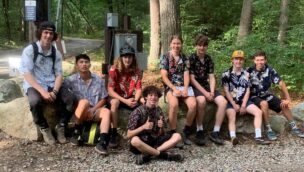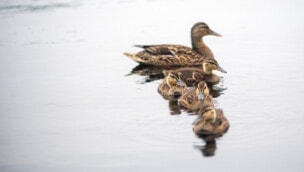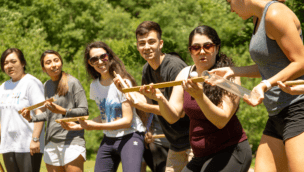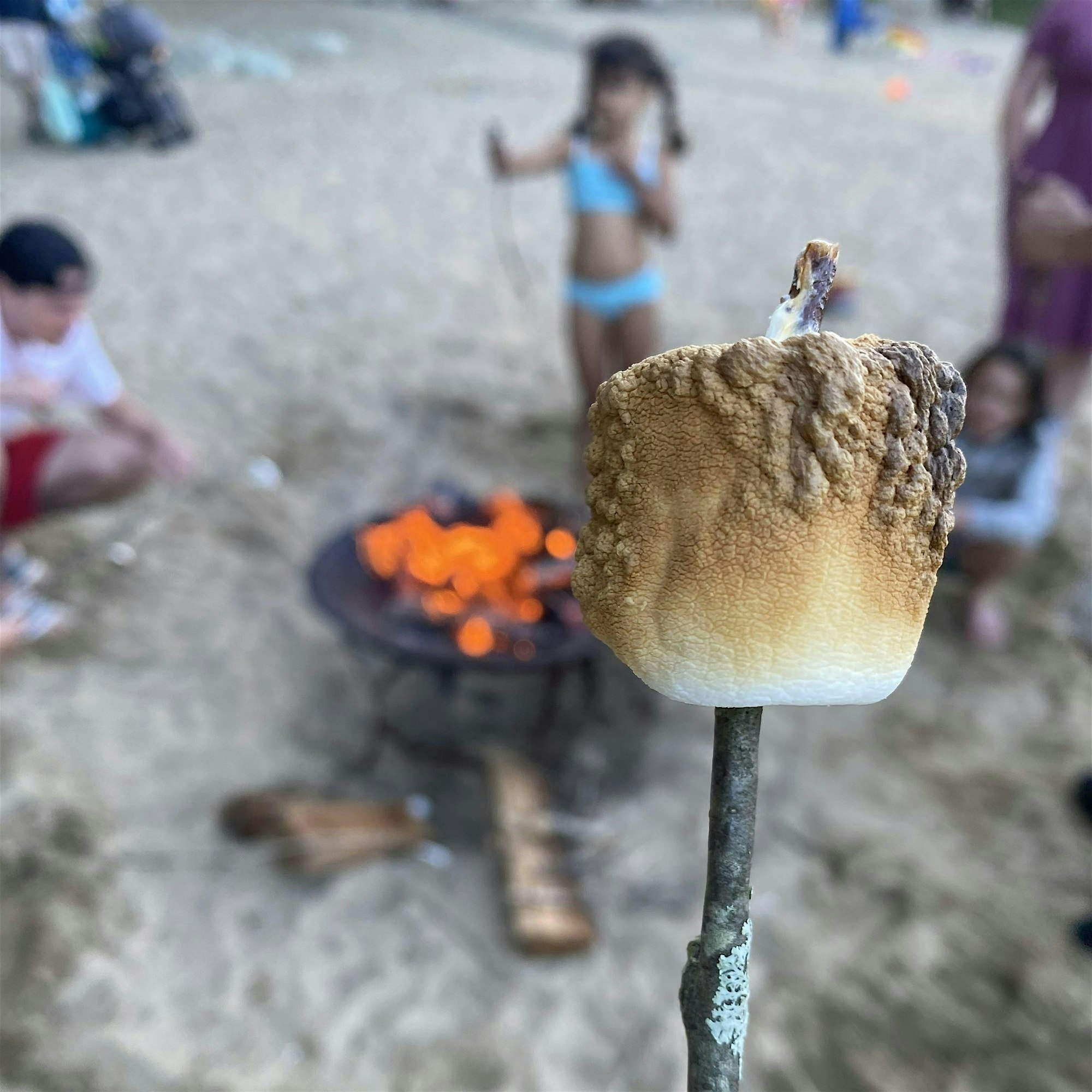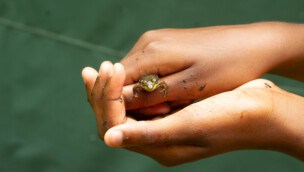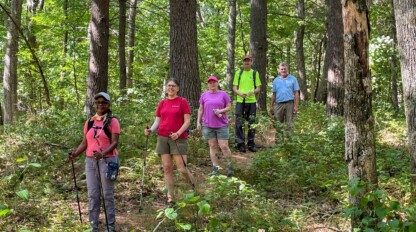Meet Hale’s Wildlife
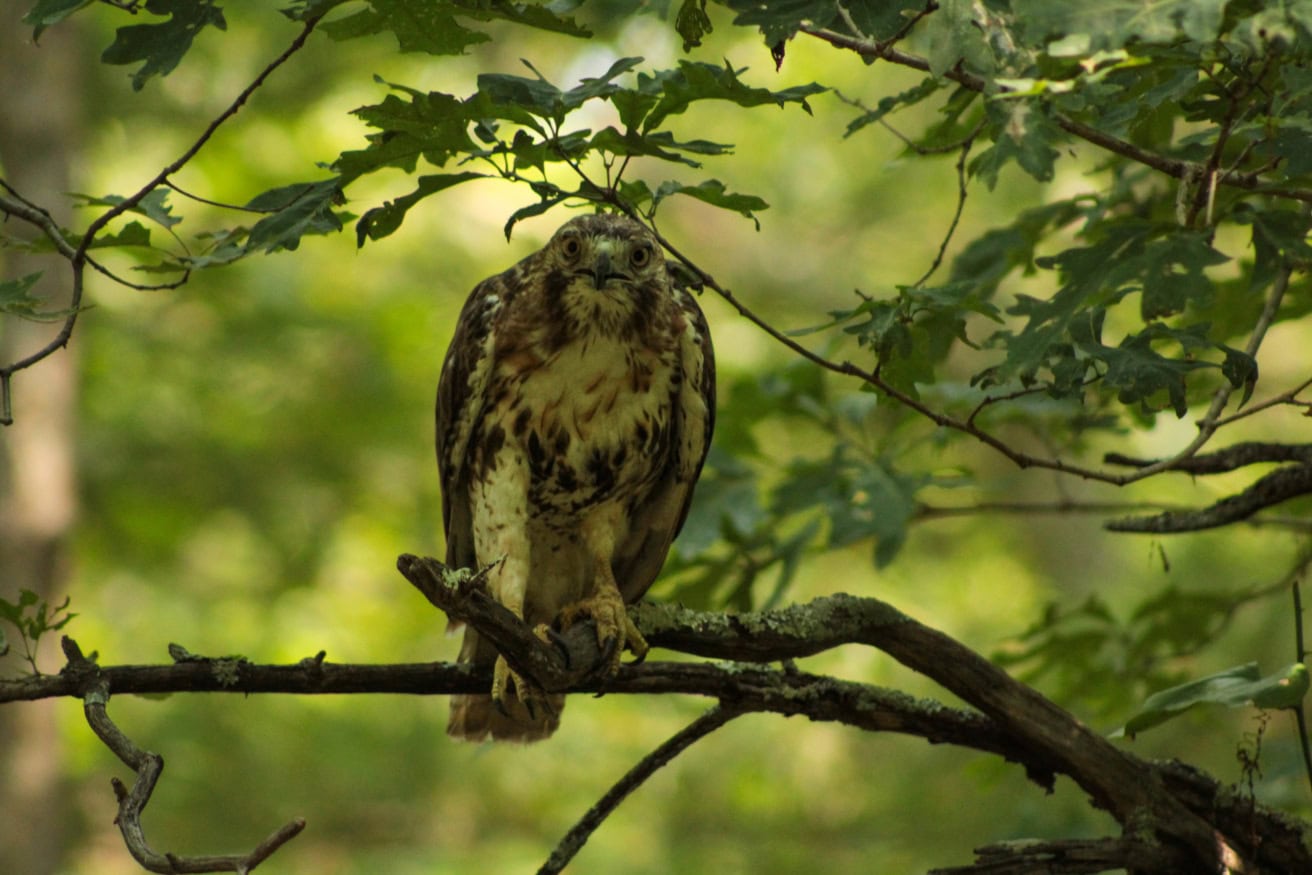
Hale Education’s 1,200+ acres of forests, fields, and wetlands aren’t just a playground for people. They’re also home to a diverse array of wildlife! Whether you’re hiking the trails, paddling across ponds, or simply enjoying a picnic, you’re sure to spot birds, fish, insects, and mammals going about their daily lives. Here’s a look at some of the creatures that call Hale home.
Birds of a Feather
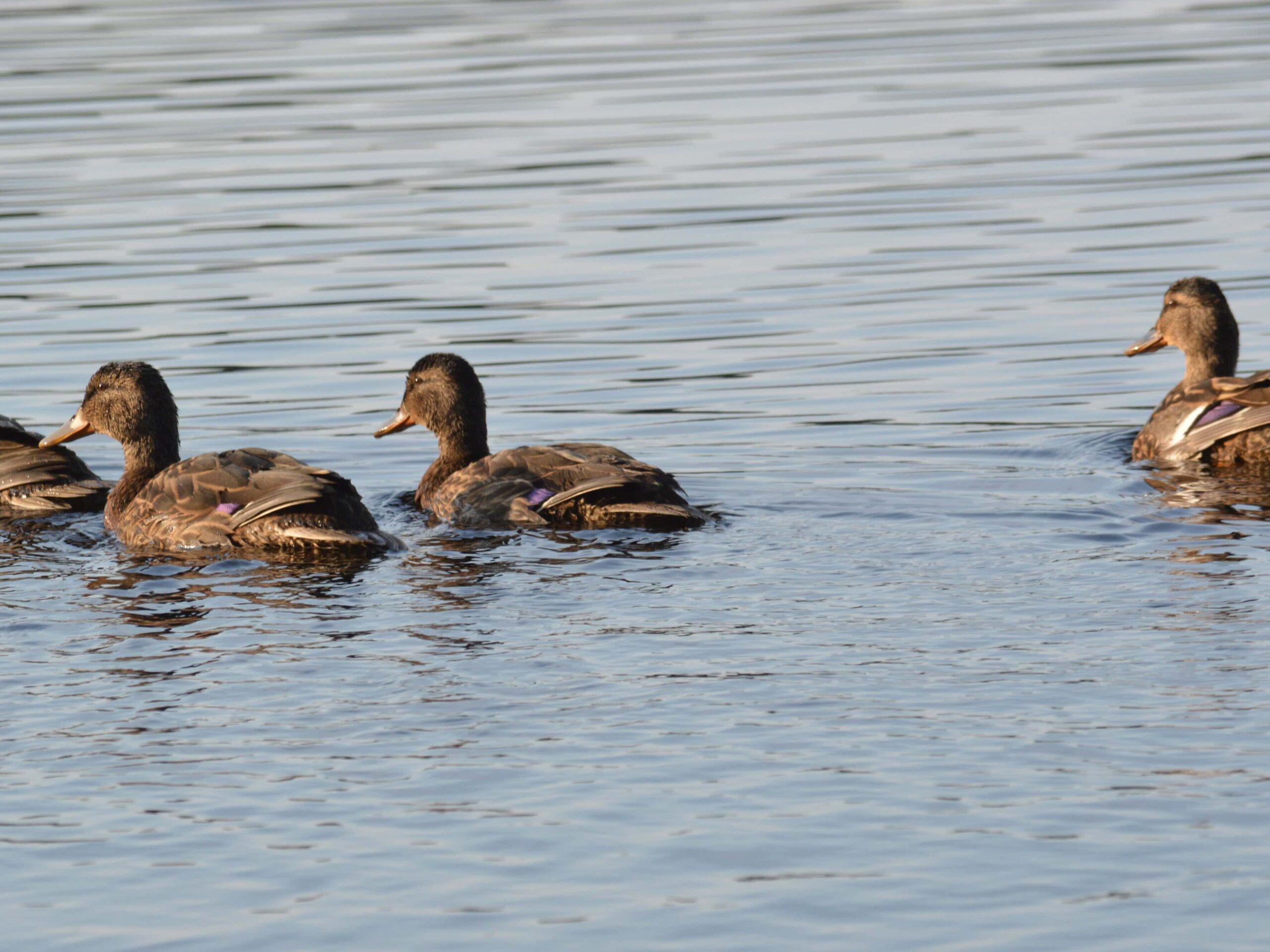
Birdwatchers are in for a treat at Hale. The Massachusetts state bird, the black-capped chickadee, is a year-round resident. With its cheerful “chick-a-dee-dee-dee” call, it’s a small bird with a big personality.
Overhead, you might spot the impressive red-tailed hawk, often perched in tall trees or soaring in wide circles as it hunts. Its piercing cry is a hallmark of the skies above Hale.
If you hear a steady tapping on a tree, a woodpecker is likely nearby. Several species live here, pecking into bark in search of insects and creating nesting cavities that benefit other wildlife, too.
Tip: If you’re new to birdwatching, any number of apps can help you identify our feathered friends. Check out the National Audubon Society’s free digital field guide.
Slithering and Swimming Around
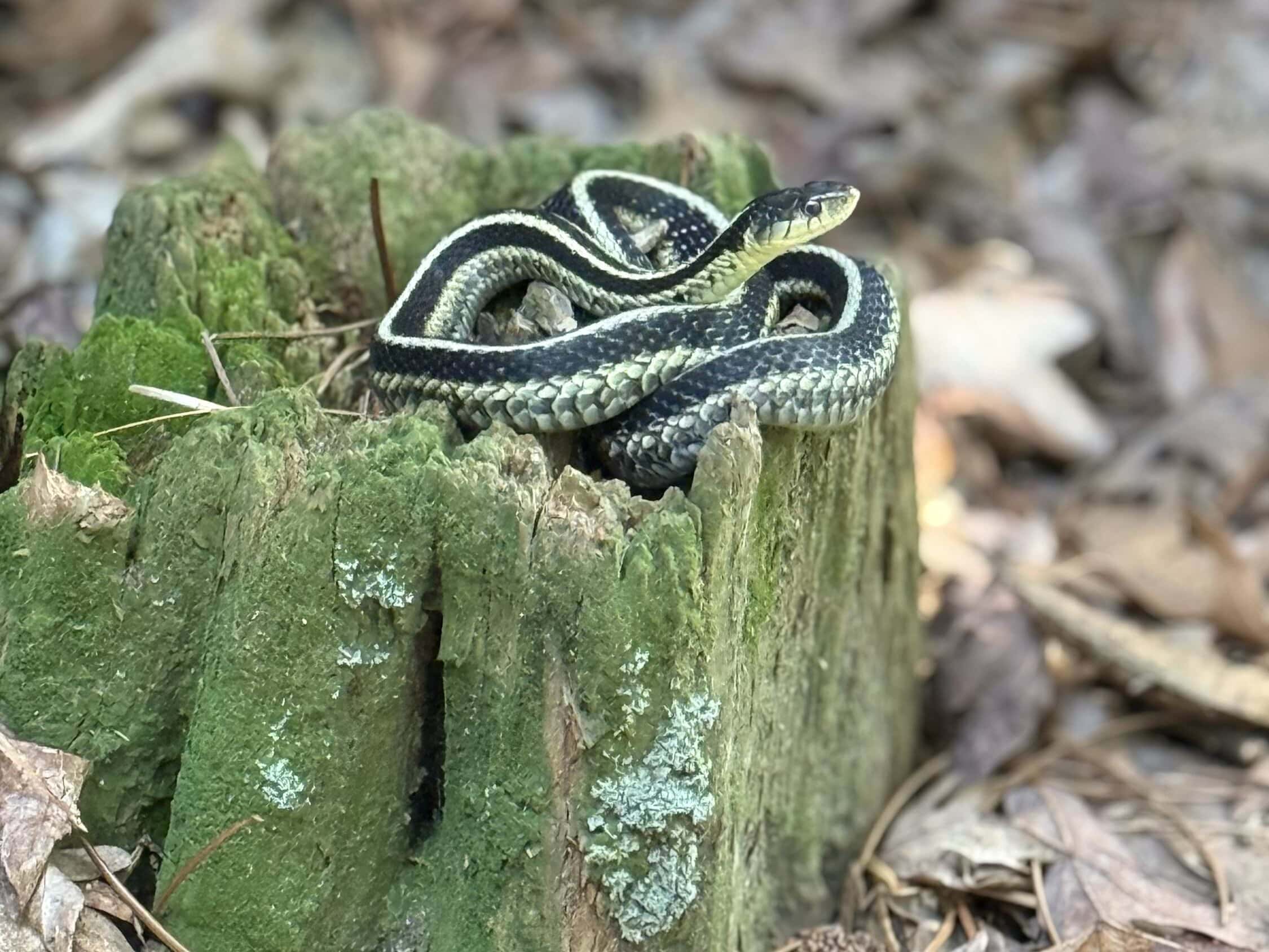
On warm, sunny days, the garter snake can sometimes be seen basking on rocks or slipping silently through the grass. Harmless to humans, these snakes help control insect and rodent populations.
In Hale’s ponds and wetlands, snapping turtles patrol the water. These prehistoric-looking reptiles can live for decades and play an important role in keeping aquatic ecosystems healthy because they eat both carrion (dead animals) and live prey. While they may appear slow on land, they’re agile swimmers and best admired from a distance.
Did you know? South Beach is home to a snapping turtle affectionately known as “Fluffy.” Swimmers love to look for this gentle giant every summer!
Exploring From Dusk Until Dawn
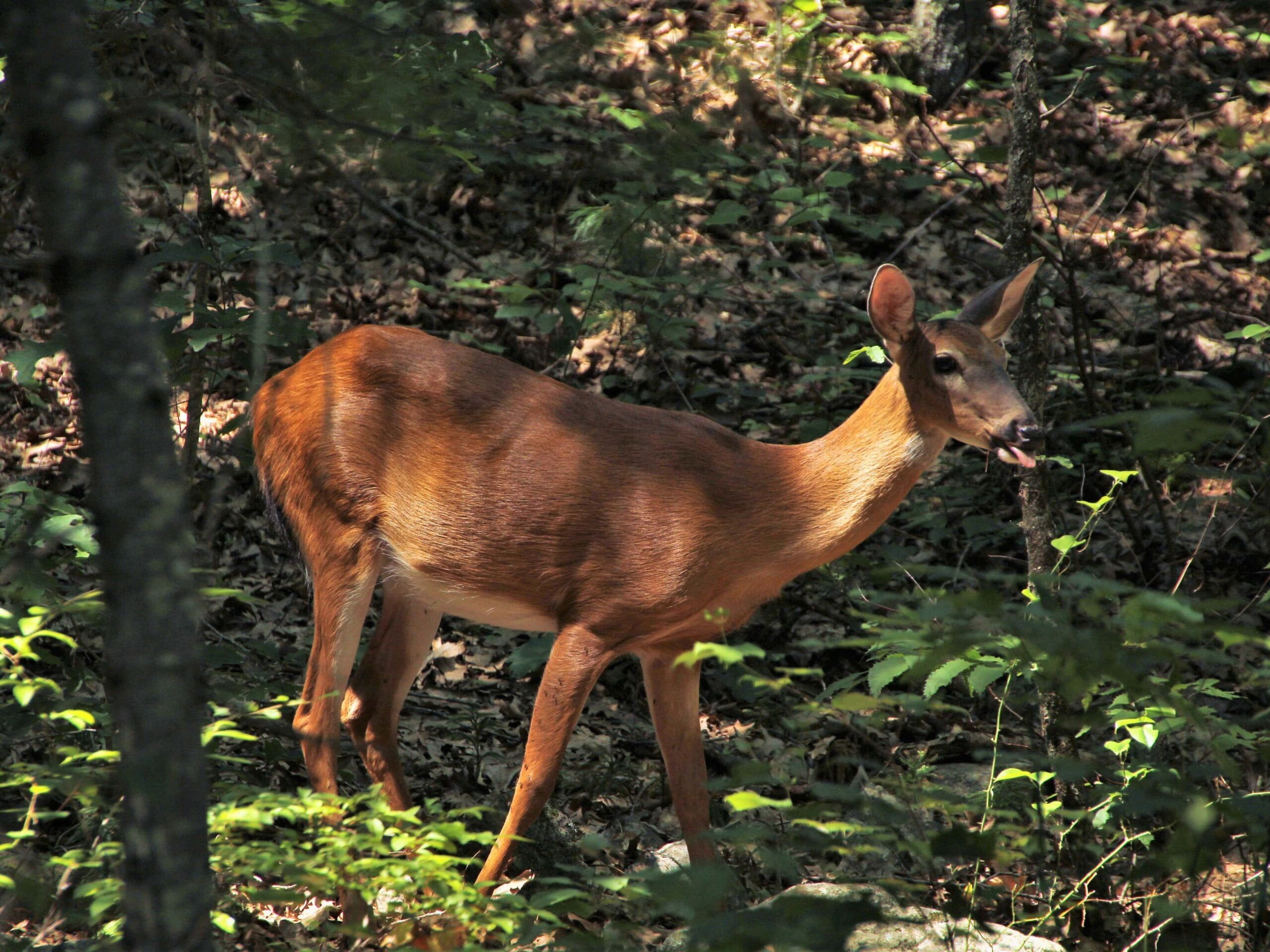
Some of Hale’s most active residents are crepuscular (active at dawn and dusk) or nocturnal (active at night). White-tailed deer graze in open fields and pick their way through the woods, especially in the early morning and evening. The red fox is a clever predator often seen at the edges of meadows, hunting for small mammals. At Hale, we’ve noticed they’re especially prevalent during their mating season, from January through March — and it’s easier to spot their striking reddish-brown fur against bright white snow, when all of the leaves are off the trees!
Squirrels are daytime acrobats, leaping from branch to branch and hiding nuts for the winter. Beneath the surface, voles tunnel through grasses and leaf litter, creating hidden highways for travel and foraging.
Raccoons, with their distinctive masked faces and nimble paws, emerge during nighttime. So do opossums, North America’s only marsupial. Opossums are excellent at pest control, eating ticks, insects, and even venomous snakes.
Seeing Wildlife at Hale
The best way to see Hale’s wildlife is to slow down and observe. Walk quietly and keep your distance. Remember that these animals are wild, and this is their home. Our role is to respect their space and habitat. Whether you come across a soaring hawk, a sunbathing turtle, or the quiet rustle of a fox in the brush, you’re experiencing the natural heart of Hale.
Visit our Conservation Restriction page to learn more about the historic effort that permanently protected this irreplaceable habitat for wildlife and people to enjoy forever.


